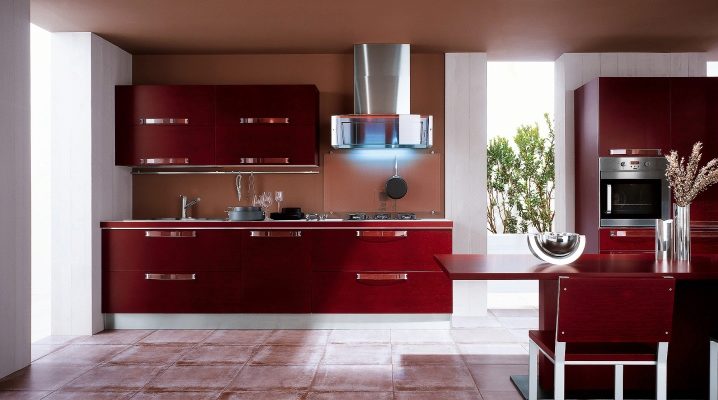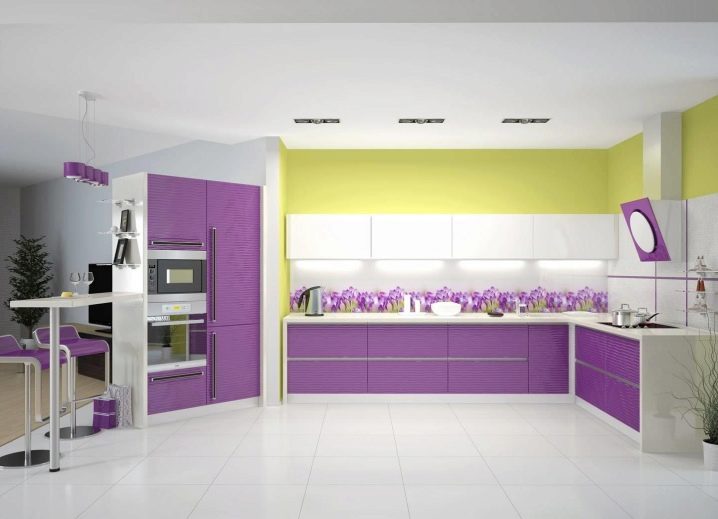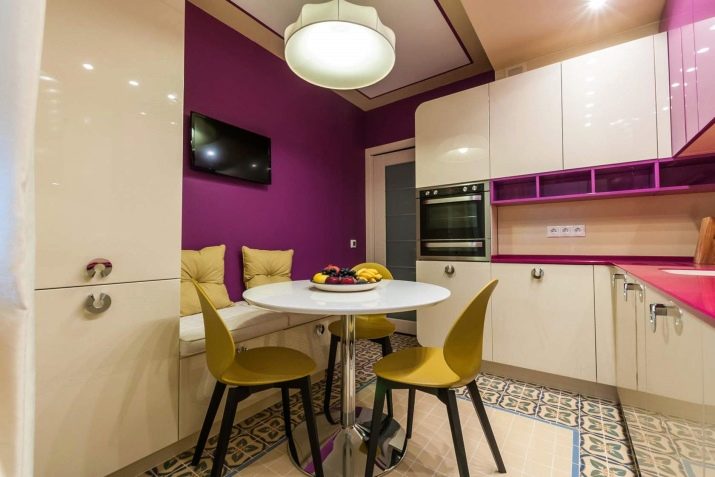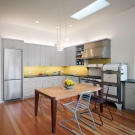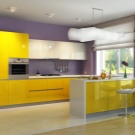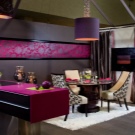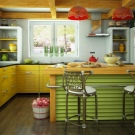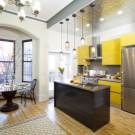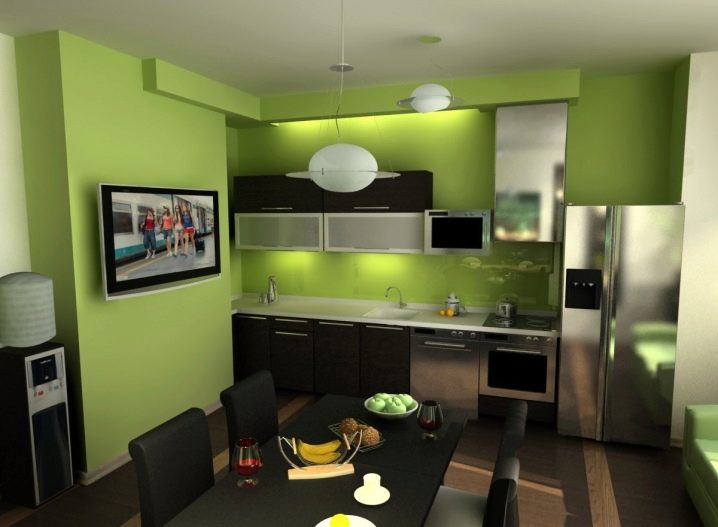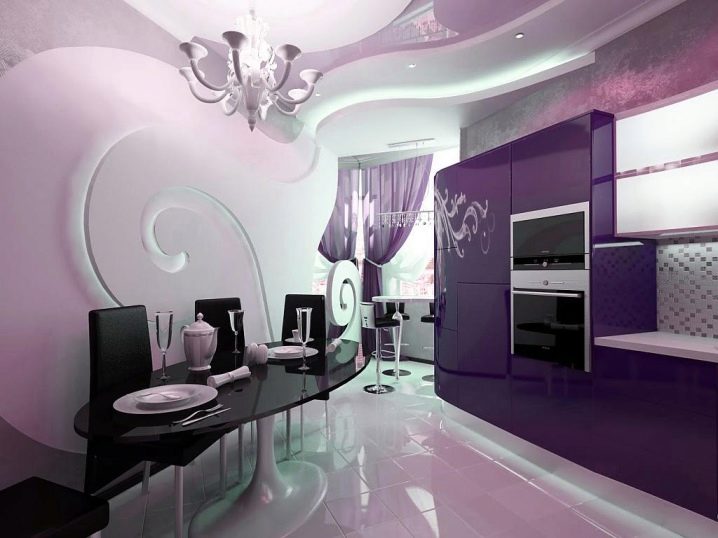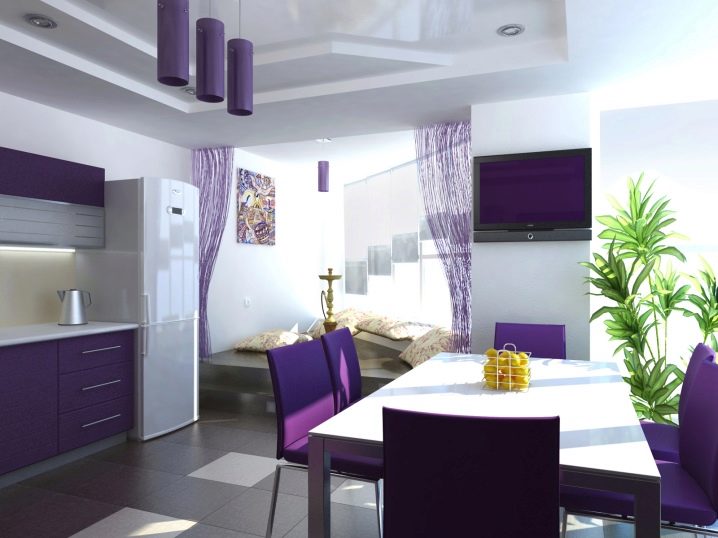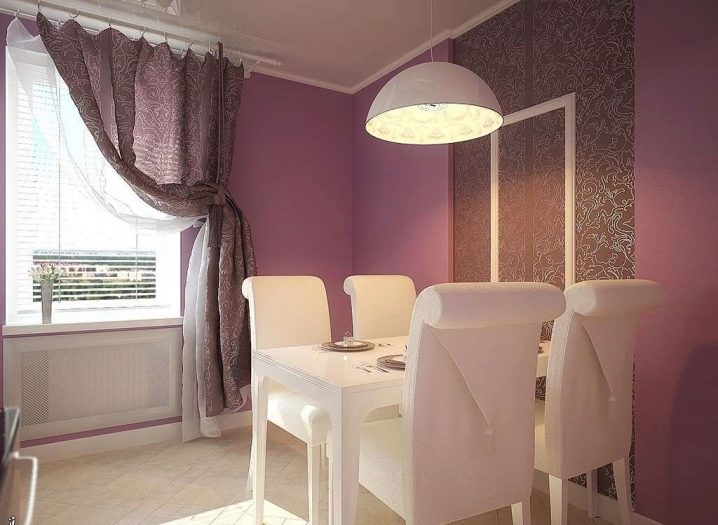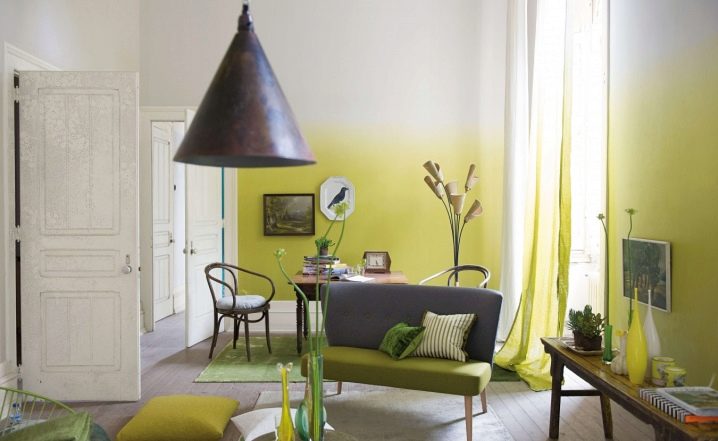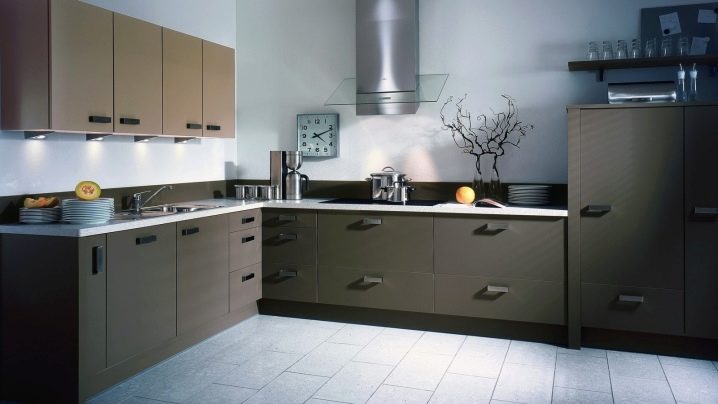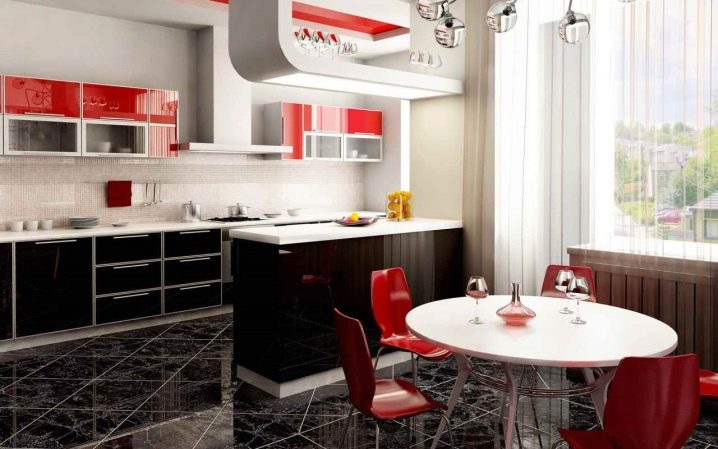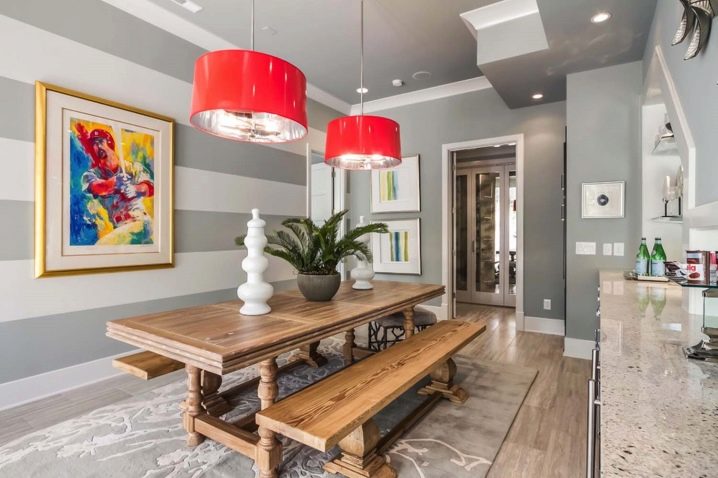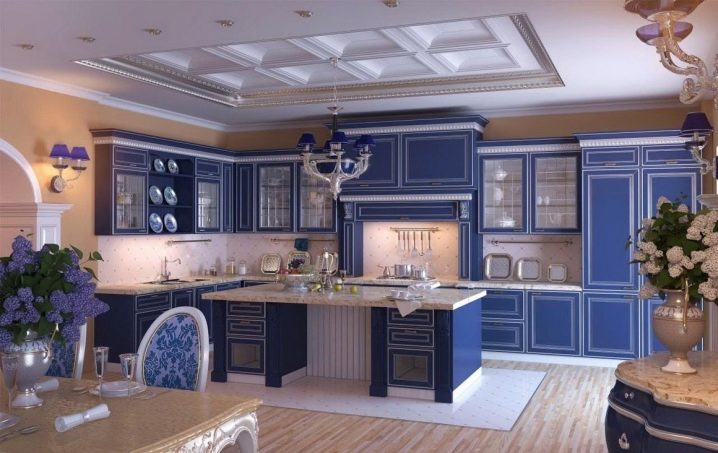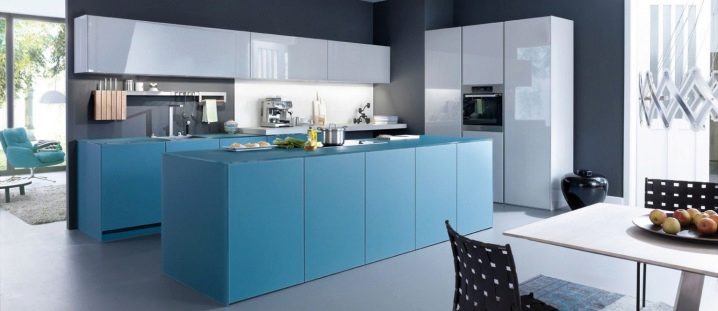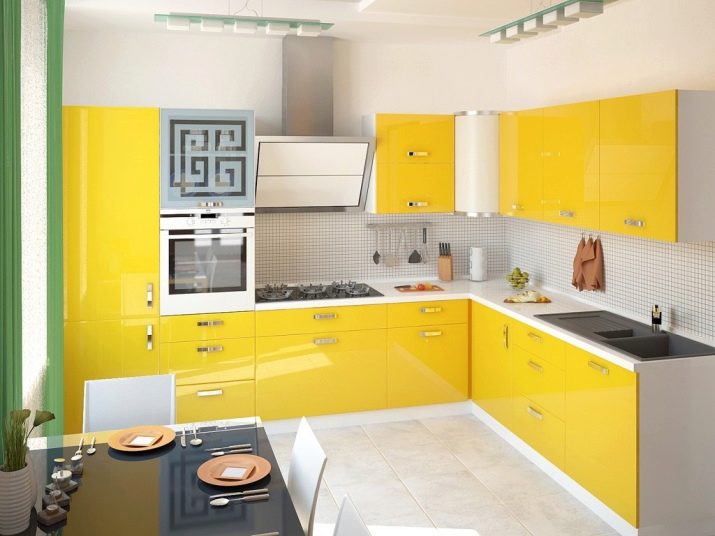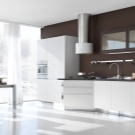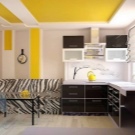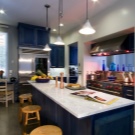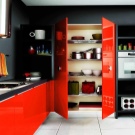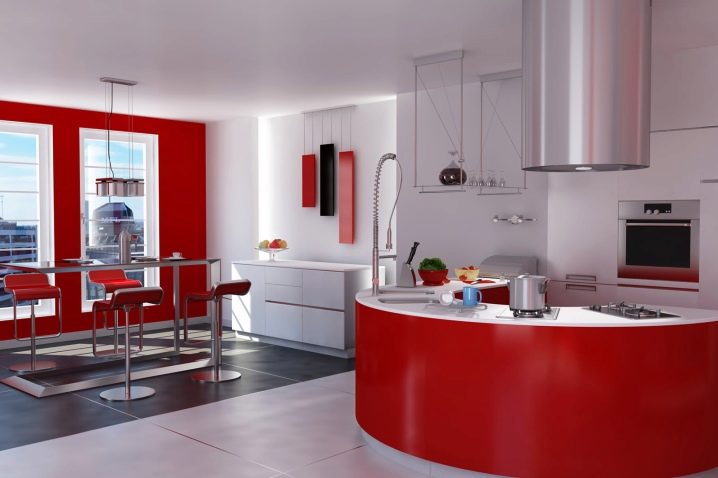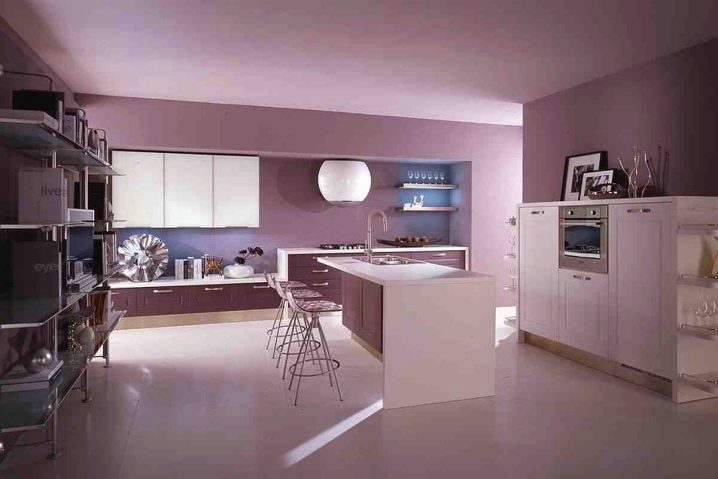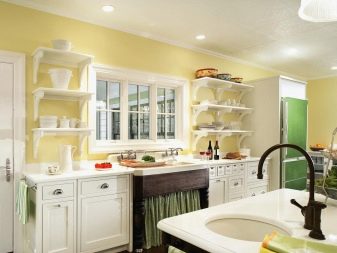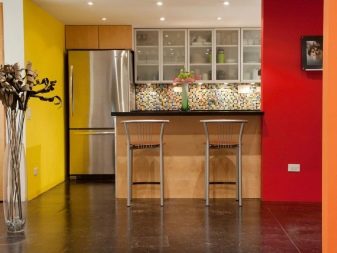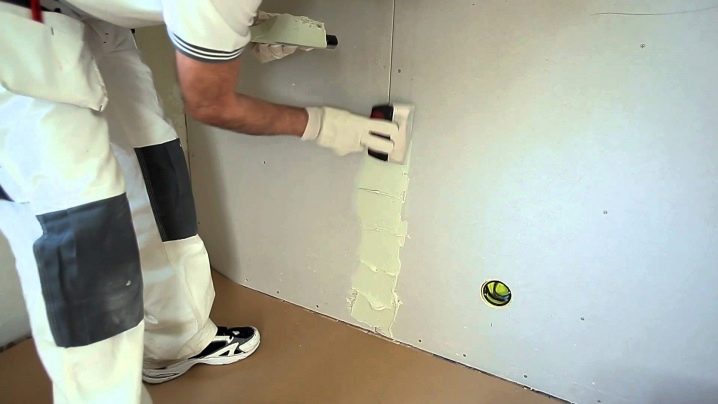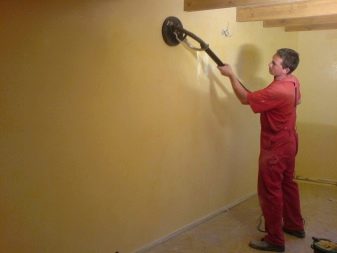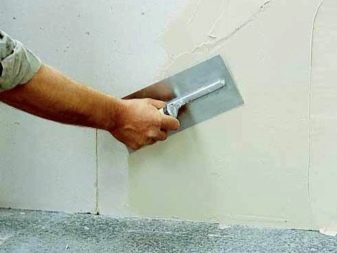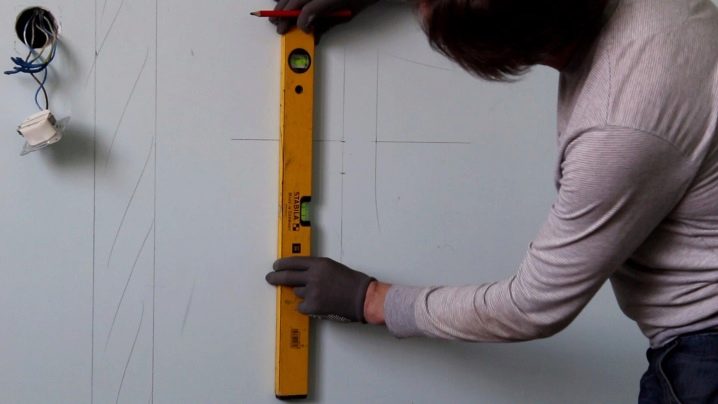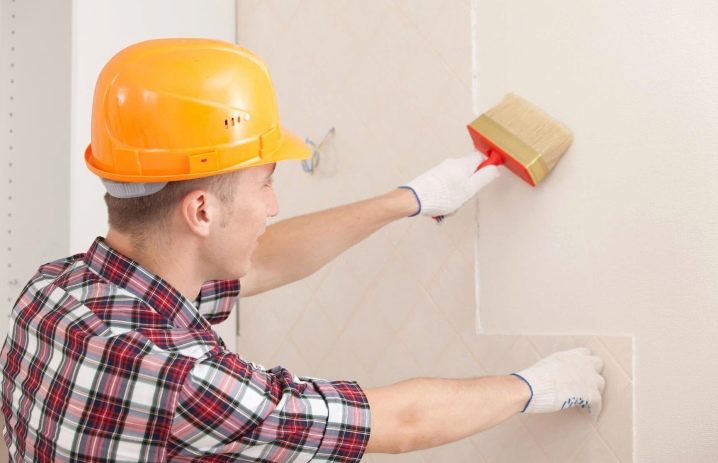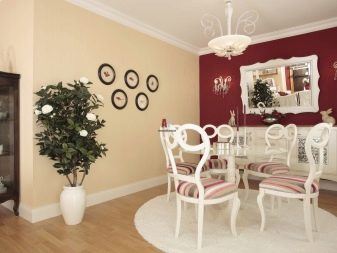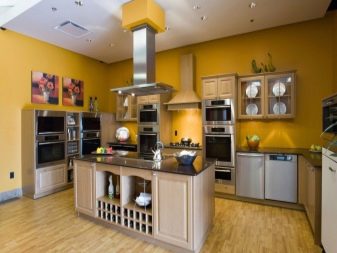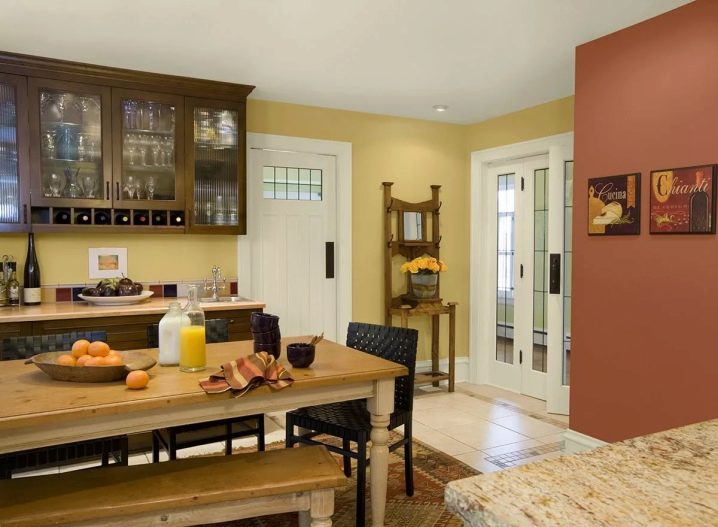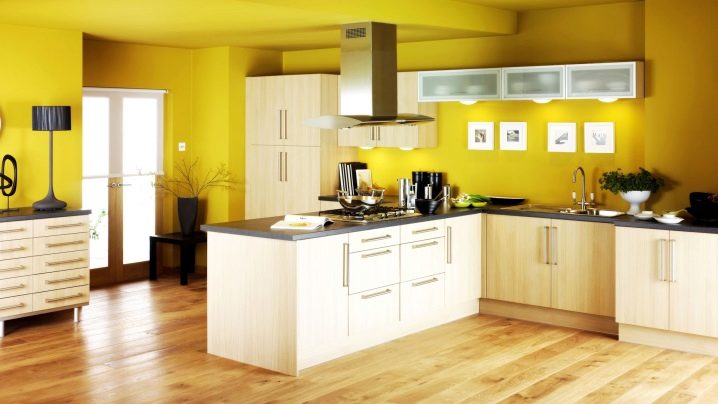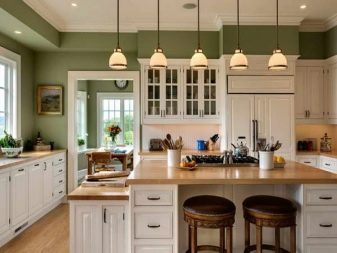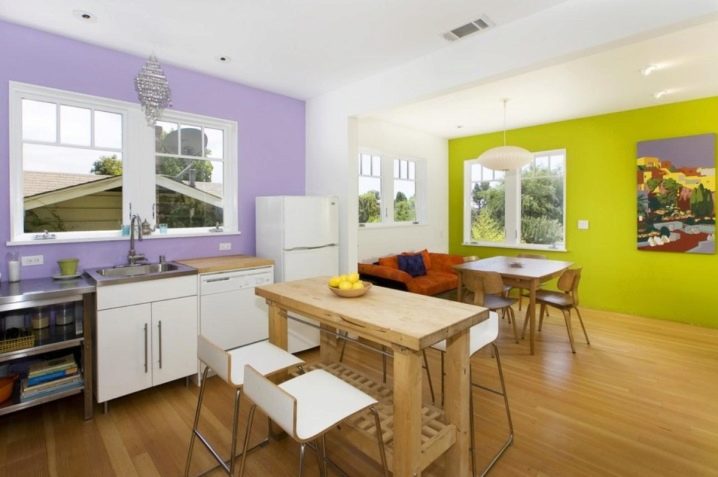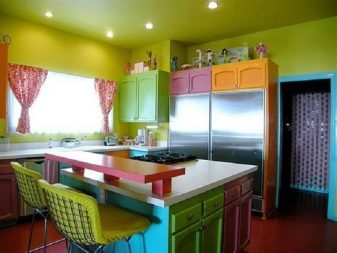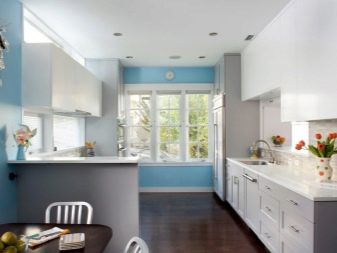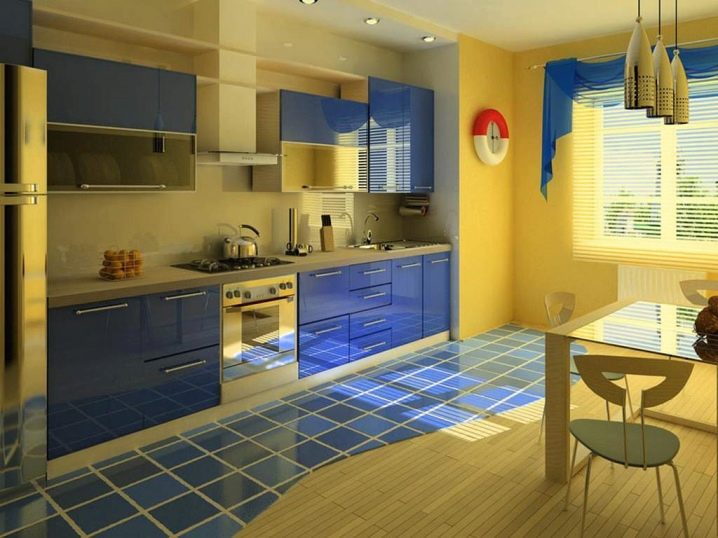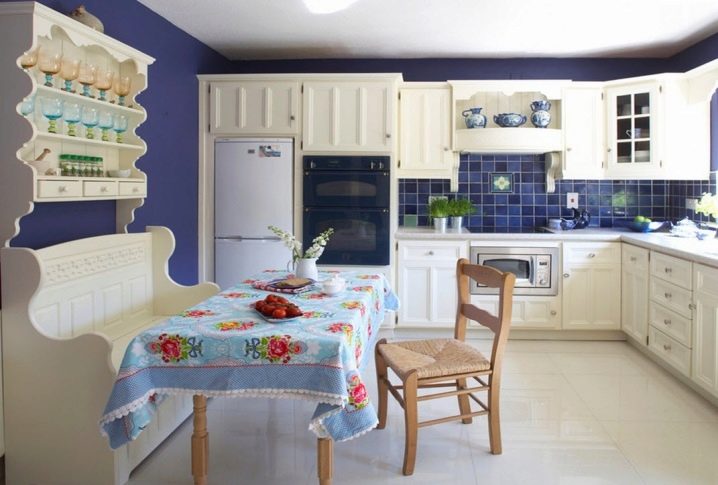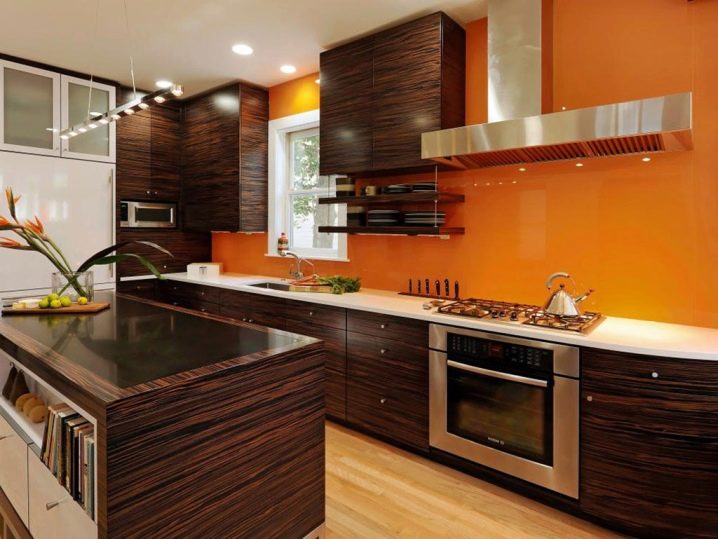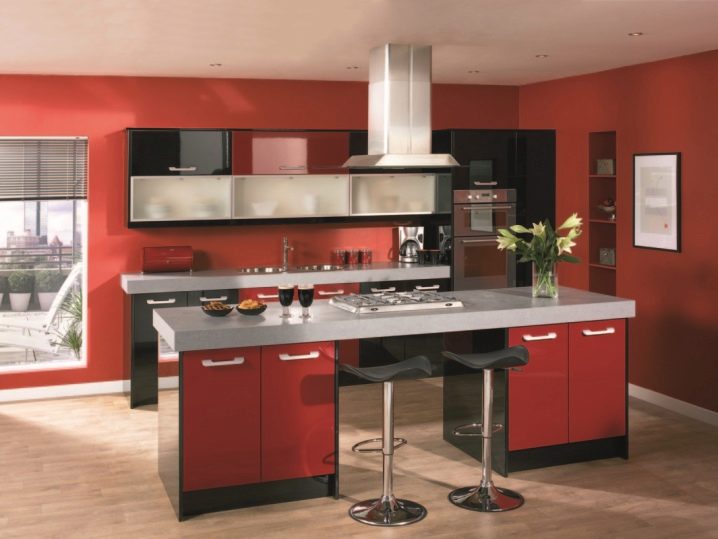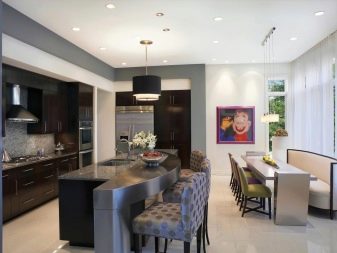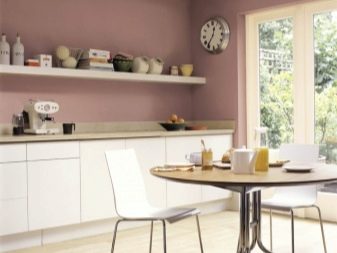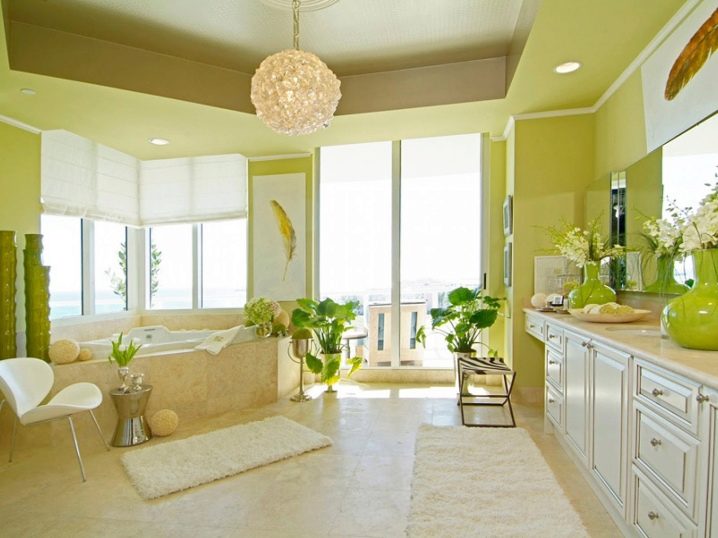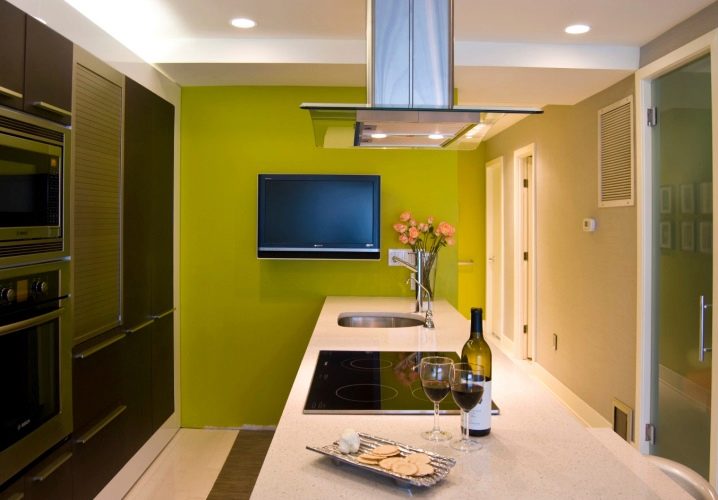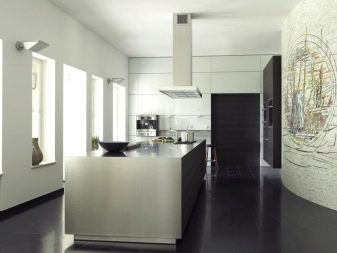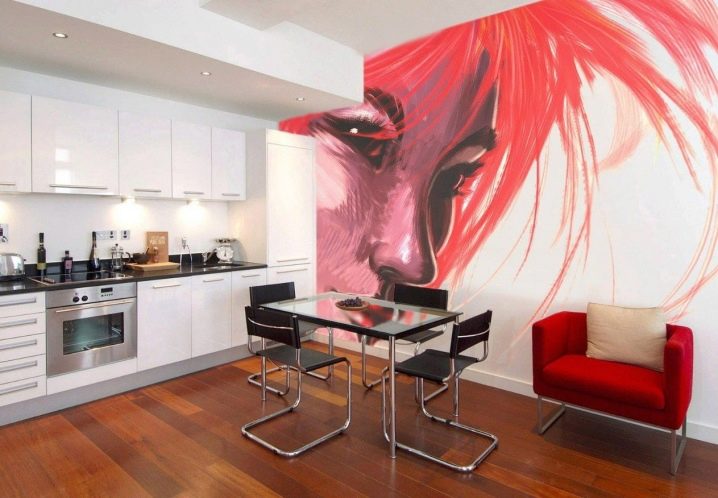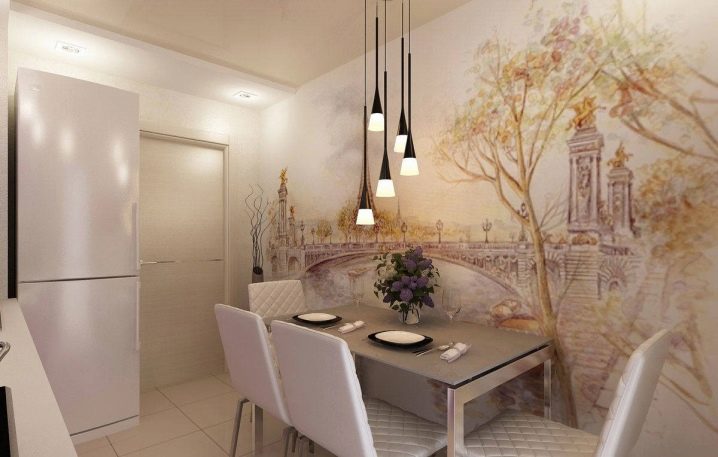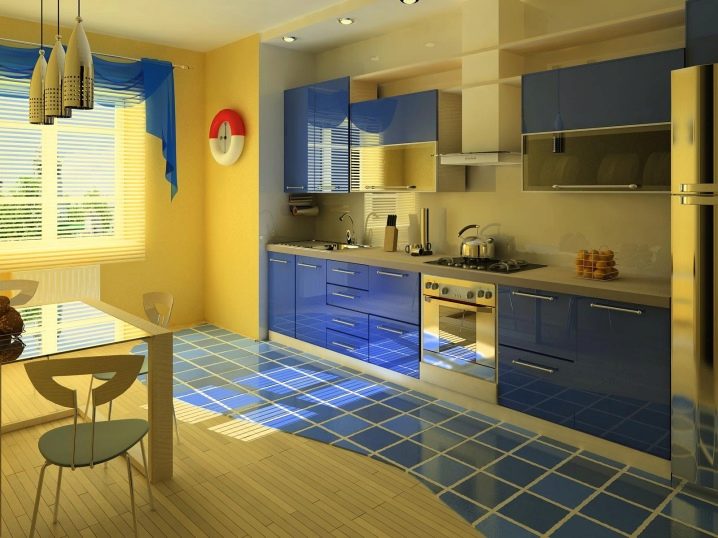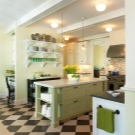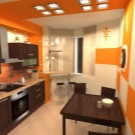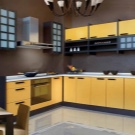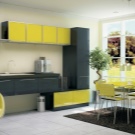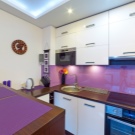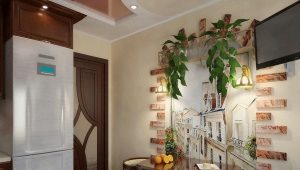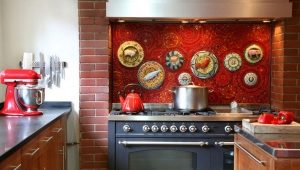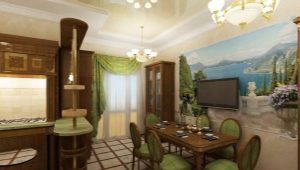Painting the walls in the kitchen
The kitchen is a room that needs repair over time. And the kitchen walls are especially problematic places, since during the preparation of food dust, soot, condensate accumulate on them to a greater extent, later greasy stains and scratches appear. How to achieve a neat and beautiful view of the kitchen? To do this, it is important to reliably protect the walls in such a way that then it is easy to remove the mud deposit from their surface.
The best option in this case is painting the walls, as this coating is bright and beautiful, easy to clean, relatively easy to update and available for any family budget. At the same time on a smooth surface with well-created lighting beautifully visible spectacular gradient pattern, which can emphasize the individual style of the kitchen.
Paints and their features
For the creation of modern kitchen design do-it-yourself paintwork materials are perfect. To determine the paint that is most suitable for kitchen walls, it is necessary to know its properties, characteristics and selection parameters:
- the most important parameter that determines the optimal paint - water resistance;
- the ability to change colors using color schemes;
- ease of application when choosing a material is also not the last role;
- air permeability (in order to avoid the pathogenic microorganisms settling under the paint layers);
- environmental friendliness and absence of irritating odor;
- fire safety;
- drying speed;
- adhesion (ability to grasp the surface) and durability;
- budget.
Currently, the market for consumers offers various types of paints and varnishes, which can be qualitatively painted the walls in the apartment. They differ in coloring composition. But the requirements remain the same: increased durability with a long stay in changing microclimatic and temperature conditions, the influence of various states of water, cleaning with abrasives.
The most popular paints are water-dispersion and water-based paints, which in turn are silicone, acrylic, mineral and silicate,their main composition: water, color pigments and polymers.
For kitchen walls use acrylic and silicone.
Acrylic paints - the best option. It mainly consists of organic resins and latex. The result is bright beautiful walls with durable and coating that can be washed. Acrylic is optimal for the treatment of wooden, brick walls, as well as drywall, plaster, OSB, chipboard and fiberboard. One minus - the cost is higher than other types of paints.
Water-dispersed paints in the form of a weighted emulsion obtained have advantages in the form of ease of use and speed of drying. It is most convenient to apply this emulsion with the spray gun. The material fits well even on the old paint. This is quite a budget option, having a good vapor permeability and if all the conditions for proper application are met, it can please up to several decades. But when exposed to low temperatures - they lose their characteristics. Storage for this reason is only at room temperature.
Alkyd and oil paints - due to the sharp unpleasant smell have a lower prevalence. Their advantages are: wear resistance, resistance to moisture and detergents, low price, economical consumption, a wide range of colors and shades.
Training
Before painting it is necessary to prepare the surface, having treated it with putty followed by priming, otherwise all the irregularities of the walls will be visible. Therefore, it is necessary to remove the old coating and using a putty to make the surface as flat as possible. This process will require:
- spatula for applying and distributing the spatula to the wall;
- spatula blade for applying the composition to a large spatula;
- A bar that has clamps for sandpaper.
If there are large pits and cracks in the wall, a starting putty with a coarse-grained consistency will be required, which more strongly adheres to the treated surface.
As a result, new flaws in the form of cracks do not appear. Finishing filler is spread over the top to level out minor defects. After drying, all plastered walls are sanded with a surface grinder or with circular movements of sandpaper.For this process, it is important to bright lighting, which will allow you to see all the minor defects. Due to grinding, a lot of dust appears, therefore it is necessary to use a respirator. In order to avoid dust from entering the kitchen, you can use wet towels, which must be placed on the threshold and in the doorway.
Building level, you can check how smooth the surface turned out. To do this, you need to attach it to the wall and hold it without lifting it from the surface. If there are gaps between the level and the wall, then this place needs to be adjusted. At the end of the filler process, be sure to clean the dust with a vacuum cleaner or a brush and wipe the wall with a damp cloth.
A primer is a slightly viscous liquid that resembles a diluted glue for wallpaper. It performs particularly important functions: it aligns and prevents excessive absorption of the walls, more reliably and permanently adheres the paint to the surface of the walls. The most effective primer penetrating the most deep. It is applied with a soft paint brush, because the roller may soak the surface unevenly. After application, give the layer enough time to dry.
Painting
Painting - the final stage, which requires a certain preparation of the room. Furniture, carpets and carpets, doors, windows, appliances should be covered with a film, masking tape, paint over the edges of the ceiling and skirting boards edges. Eliminate the possibility of drafts and prevent sudden changes in temperature.
Depending on the type of paint and the condition of the painted surface, you need to choose the correct roller and brushes. Nylon brushes are suitable for water-based or water-dispersion paints. Brushes with natural bristles for alkyd. Velor roller with a short nap is optimal for smooth surfaces, with medium or long - for a rough, textured surface.
Before the start of all repair activities, it is necessary to bring paint into the room where it should be about a day for the paint temperature to be room temperature. Then, if necessary, add color and mix thoroughly. If you plan to use the spray gun, then you need to dilute the paint with water. To obtain the final uniform color on all walls, it is better to knead all the necessary volume at once, since the colors may differ in shades even in the banks of one batch.
The process of painting "water-based":
- to avoid the appearance of smudges and excess paint on the brush, you must use a paint jar;
- angles and slopes need to paint over brush. After that, the main part is painted over with a roller;
- It is recommended to paint as follows: first with horizontal strokes or herringbone, then apply a layer from top to bottom.
Alkyd paints are more viscous and more difficult to handle. The first layer is painted with a brush with natural bristles, and after it dries, it is perpendicular to the finish roller. To obtain a uniform surface it is necessary to paint it all at once and completely.
Choosing a color
The color of the kitchen walls is of great importance in determining the style of the whole room. The correct color can visually expand the area and raise the ceiling. It is not recommended to use too bright colors when painting. The color of the walls is the main one and should be in harmony with the available kitchen furniture, but not coincide, because such a kitchen, when merging, will look boring. To obtain a saturated surface color, it is necessary to paint it up to 3 times, applying a new layer after the previous one is completely dry.
It is necessary to take into account the fact that the glossy paint on the walls looks brighter than in factory cans, and the matte one is darker, and also remember that the resulting color will lose some brightness after drying.
It is no secret that certain colors act differently on the psychological and physical condition and perception of the interior:
- yellow - symbolized with the heat of the sun, creates a fairly comfortable state, contributes to healthy appetite;
- blue - not very associated with food, suppresses appetite, as a result of which it is rarely used for painting walls in the kitchen;
- orange - shades of this color can cause appetite more than any other, but on the other hand, with its abundance in the room can be annoying glance;
- white - creates a feeling of sterility, so this color in the room is best combined with others;
- red - stimulates the appetite, but can irritate and cause discomfort;
- cold shades of gray, violet, green help reduce appetite, paint those walls are recommended for those who want to lose weight;
- olive color is ideal for any kitchen, creates a very cozy and stylish design.
When creating an interior using staining, you can zone the kitchen. Combining different tones and shades, divide the kitchen according to functional features.
We draw on the walls
Recently, wall painting has become especially popular. To do this, you must have a talent for drawing. In his absence, it is better to invite a professional artist who can show the most successful examples of drawing on the walls and help realize the most daring ideas in creating a unique style. This work is painstaking and often takes several days, but the result is worth it. The kitchen is transformed and takes on an exclusive look.
High-quality painting is made on perfectly prepared walls. Even the smallest irregularities are unacceptable. The sketch of the future drawing is first drawn with a pencil (you can use a stencil) directly on the plaster. You can draw a variety of geometric shapes, letters, objects.
Then you can begin to paint water-based paints.
To create the effect of volume, you need to draw a distant plan somewhat vague. For additional decoration, decorative plaster, glass, stones, pieces of wood, etc. are used.The final stage is toning with acrylics and varnishing. With proper lighting layout, the significance of artistic painting increases significantly. If the work is done qualitatively, then an exclusive drawing will delight more than 10 years.
Painting the walls in the kitchen has recently become incredibly popular. This process is troublesome, but not complicated and quite realistically performed in a short time. If you want an inexpensive, but high-quality exclusive, then you only need to supplement the painting with a pattern, painting or pattern.
When choosing paint should not only rely on their beliefs, but also pay attention to the preferences of his family. After all, the mood of family breakfasts and dinners depends on the color of the kitchen walls.
